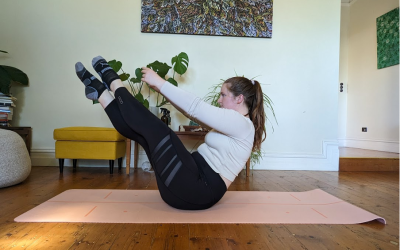I may be about to shock you with news of the death of your beloved RICER.
The RICER mnemonic (Rest Ice Compress Elevate Referral) is probably something you’re familiar with if you’ve ever been around first aid. It’s first seen in Dr. Gabe Mirkin’s The Sportsmedicine Book in 1978 and, while Dr. Mirkin redacted his support of RICER almost 10 years ago, we’ve yet to properly catch on with the updated protocols. It’s a murder mystery but this isn’t a whodunnit, we’re here to explore WHY.
Quick lesson:
- Acute injury refers to a new injury that is up to 6 weeks old
- Soft tissue refers to muscles, ligaments, or tendons; not bones
- The body’s response to sprains and strains is to begin the inflammation process – this feels like pain, swelling, redness, warmth, and loss of function
Inflammation & anti-inflammatories
Our understanding of inflammation as part of the healing process has changed in the past 15 years. Where we once avoided inflammation, we’ve since learnt that we can’t heal without it. Inflammation is an important natural process for the body, intended to flood our injured sites with all the resources it needs to rebuild and heal.
Anti-inflammatories (medications, topical creams, ice) delay this flooding of resources to your injured area. This can do two things:
- Less pain
- Delay healing*
We are offered a choice between experiencing less pain so you can get through the rest of the day or allowing pain in order for the injury to maybe heal sooner.
Does this mean that anti-inflammatories are bad for you? We’re not cancelling anti-inflammatories, please take them as directed for your pain if you need. Acute injuries can respond well to a short course of anti-inflammatories but caution should be exercised for repetitive soft tissue injury or long term injury (more than 12 weeks). Long term or high dose use of anti-inflammatories can lead to less effective soft tissue healing. Cold packs and ice can damage the skin cells and blood vessels if left on the skin for too long.

RICER
What has properly killed RICER was a lack of high quality evidence that ice was effective. Many studies agreed that while ice can make someone report that they feel better, it will do little to accelerate the recovery process. This is great news for all the cold people out there that hate ice and wish all the cold plunge swimmers would pipe down a bit. Compression and elevation were also under fire within the restructuring of RICER, with some findings demonstrating that while they feel nice, they are ineffectual at improving tissue repair. They manage to scrape their way into the re-brand, though, purely for being so low risk that you might as well do them.
Not even rest is safe from being axed. The lymphatic system needs muscle contraction to propel waste products away from your injured area, so being immobile will also do little to improve tissue repair. And the Pluto of RICER, referral, often neglected, gets the axe too. Active recovery with movement and exercise is being promoted in place of passive therapies. They want you to keep your doctor out of this and deal with it on your own.
Should I put a heat pack on it?
If inflammation is actually important for us to heal, does that mean that more inflammation is better? Heat therapy (heat packs, topical creams, saunas) can increase blood flow, metabolism, and connective tissue elasticity. This is great for when your body’s feeling stiff or cold but, since we are looking specifically at sprains and strains, heat will likely increase swelling in an injury. More swelling is counterproductive, it takes more time for the body to clear away the oedema from the injury.
The Re-brand
As RICER died, the improved (less catchy) mnemonics rose from its ashes: PEACE & LOVE
Protect from too much movement but only for the first few days
Elevate higher than your heart, if you like, it’s not going to do a lot for you
Avoid anti-inflammatories this delays tissue healing, even if it helps with pain
Compress with soft elasticated bandages if it makes you feel better, not overnight
Educate yourself, listen to your body, be active in your recovery
&
Load increase weight when it’s safe to, let pain guide your way
Optimism towards recovery, confidence and positivity are integral
Vascularisation to your tissues, do cardiovascular exercise that doesn’t feel painful
Exercise to recover, restore your strength, mobility, flexibility, proprioception
Just 9 words, each with their own caveat to memorise. And there’s a lot of E’s. While this long (read: gratuitous) mnemonic is more accurate, it doesn’t have the same feel as RICER. Maybe there’ll be a new one that is more accurate and more succinct at a later date, for now this is what we can use. And to re-iterate this is just to speed up recovery of soft-tissue injuries, please don’t move your fractures.
I can’t help but see the “Avoid anti-inflammatories” advice and not think who does this help? It’s likely designed to retrain people with an over-reliance on anti-inflammatories and passive treatments, but anti-inflammatories help to decrease pain and often that’s all we can think about. The studies arguing against RICER agree that anti-inflammatories decrease pain, that ice can make someone feel better, it just also slows down recovery. If speedy recoveries aren’t the priority, PEACE & LOVE might not be relevant in the context of the general public.
What now, Poirot?
I know what you’re thinking: did you just both-sides an argument with yourself over the use of ice? Yeah, but hang in with me here, I’m making a point.
Use ice, or don’t, but you should at least know why.
Our understanding of medicine and the body evolves over time, and part of working in health is keeping eyes and ears open for research that contradicts our assumed beliefs. We exist in an age of increasing information available everywhere all the time vying for your valuable attention, and what gets lost is nuance and accuracy. In order to treat ourselves and others as best we can, doctors and the general public, we need to be led by the evidence and research being done right now, not rest on our laurels.
And, dear reader, if your brain is too full of information to take in anything else, that’s what we’re for. Our brains are chock-a-block full of medical information that we can’t wait to tell you. Delegate! Handball! Let me tell you everything I know!
References
Is it time to put traditional cold therapy in rehabilitation of soft-tissue injuries out to pasture?
The R.I.C.E Protocol is a MYTH: A Review and Recommendations – The Sport Journal
Soft-tissue injuries simply need PEACE and LOVE | British Journal of Sports Medicine
The cold truth: the role of cryotherapy in the treatment of injury and recovery from exercise
Mechanisms and efficacy of heat and cold therapies for musculoskeletal injury




